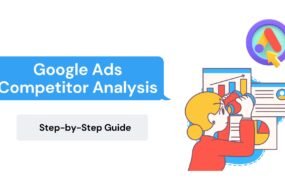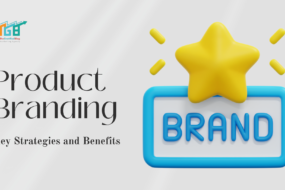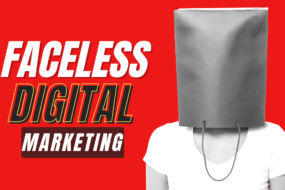
In today’s world, marketing has become more than just promoting products or services. It has evolved into a strategic process that involves capturing the target audience’s attention, creating a unique brand identity, and staying ahead of the competition. One of the key strategies utilized by companies to gain a competitive edge in the market process is Ambush Marketing.
To help you understand it better, we have created this blog post to discuss what ambush marketing is, its different types, its advantages and disadvantages, its famous campaigns. We will also provide tips on executing the campaign and conclude with our final thoughts and recommendations for businesses interested in implementing this strategy.
So, Let’s get started.
What Is Ambush Marketing?
Ambush marketing is a strategy in which a non-sponsor brand promotes itself by associating with a particular event or property without obtaining official sponsorship rights.
In other words, it is a marketing technique that involves capitalizing on the popularity and attention of a high-profile event or property to promote a brand or product without actually being an official sponsor.
Types Of Ambush Marketing

Well, there are two types of Ambus Marketing, those are:
- Direct Ambush Marketing
- Indirect Ambush Marketing
Let’s learn about each of them in brief:
Direct Ambush Marketing
Direct ambush marketing is a promotional technique in which a non-sponsor brand directly and intentionally exploits an event or property to gain attention and create an association.
Now that you know what it is? Let’s explore the various types it can be classified into.
- Predatory Ambush
Predatory ambush involves a non-sponsor brand using the official sponsor’s advertising space or location to promote its products or services.
This can be done through various tactics, such as placing ads or banners near the official sponsor’s advertisements or setting up promotional booths outside the event venue.
- Trademark Infringement
Trademark infringement is a type of direct ambush marketing involving a non-sponsor brand using a trademark or logo similar to the official sponsor’s trademark or logo.
This can confuse the audience and lead them to believe that the non-sponsor brand is an official sponsor.
- Self-Ambushing
Self-ambushing refers to a specific type of ambush marketing where a brand that is not an official sponsor strategically utilizes its branding to establish a connection with an event or property.
This can be done through various tactics, such as using event-related hashtags or creating event-specific promotions or merchandise.
- Coattail Ambush
Coattail ambush marketing involves a non-sponsor brand using the success of the event or property to promote its products or services.
This can be done through various tactics, such as advertising the event or property or creating event-related promotions or merchandise.
Indirect Ambush Marketing
Indirect ambush marketing is a more subtle and creative approach where a brand indirectly associates itself with an event or property without mentioning or using official branding elements.
Now that you know what it is? Let’s explore the various types it can be classified into.
- Associative Ambush
Associative marketing is a tactic a non-sponsor brand employs to create a strong association with an event or property without being an official sponsor. Instead of directly referencing the event or property, the brand utilizes creative and strategic marketing tactics to establish a connection in the minds of consumers.
This can be done through various tactics, such as using event-related keywords or creating event-specific promotions or merchandise.
- Distractive Ambush
Distractive ambush is a specific type of ambush marketing strategy where a non-sponsor brand deliberately creates distractions or attention-grabbing activities to divert the audience’s focus from the official sponsor’s message or advertisements.
This can be done through various tactics, such as creating a spectacle or using guerrilla marketing tactics to draw attention away from the official sponsor’s message.
- Insurgent Ambush
Insurgent ambush refers to a specific type of ambush marketing strategy where a non-sponsor brand aggressively and overtly challenges the official sponsor’s authority and attempts to hijack the event or property for its own promotional purposes.
This can be done through various tactics, such as directly confronting the sponsor, publicly criticizing their involvement, or creating alternative events or promotions that compete with or overshadow the official sponsor’s activities.
Advantages And Disadvantages Of Ambush Marketing

Well, every marketing technique has its advantages and disadvantages. So, does this technique. So, Let’s understand their advantages and disadvantages:
Advantages Of Ambush Marketing
- Cost-Effective
One of the main advantages of ambush marketing is that it can be much more cost-effective than a traditional sponsorship.
Instead of paying the high costs of becoming an official sponsor, a non-sponsor brand can use ambush marketing techniques to gain exposure and generate buzz at a much lower cost.
- Flexibility
Ambush marketing provides flexibility regarding timing, messaging, and creative approach. A non-sponsor brand can launch an ambush marketing campaign anytime without going through the long process of securing a sponsorship deal. This makes the brand more agile and responsive to changing market conditions.
- Creativity
Ambush marketing requires high creativity and innovation, which can be an excellent opportunity for brands to showcase their creativity and stand out.
By using unconventional tactics, such as guerrilla marketing or newsjacking, a brand can create a memorable experience for the audience and generate a lot of buzz around its brand.
Disadvantages Of Ambush Marketing
- Very Costly
Ambush marketing can be costly, especially for small businesses or brands needing more money to execute large-scale campaigns.
Companies may sometimes need to invest significant money in creating ads, promotions, or events to generate the desired impact. Companies may also face legal fees or penalties if their tactics infringe on the official sponsor’s trademarks or copyrights.
- Difficult to determine ROI
Measuring the return on investment (ROI) for ambush marketing activities can take time and effort.
Unlike traditional marketing campaigns, where companies can track sales or leads generated from specific tactics, it can be challenging to quantify the impact of ambush marketing on brand awareness or customer engagement.
As a result, companies may need help to determine their campaigns’ effectiveness accurately.
- Time And Speed Are Rare Of The Essence
Ambush marketing requires companies to act quickly to capitalize on the event’s publicity and hype. However, creating and executing a successful ambush marketing campaign within a short timeframe can be daunting.
Companies may need to work around legal and logistical hurdles to execute their tactics, limiting their ability to act quickly. Additionally, if a company is not careful, its ambush marketing tactics could backfire and result in negative publicity or legal action.
Examples Of Ambush Marketing
- Samsung Vs. Apple

The competition between Apple and Samsung also included an intriguing example of ambush marketing. In 2011, as Apple fans eagerly awaited the release of the iPhone4S, Samsung decided to capitalize on the hype by setting up a pop-up store near Apple’s iconic storefront in Sydney.
There, Samsung offered its flagship device, the Samsung Galaxy SII, for a mere 2 AUD, which paled compared to the iPhone’s price of AUD 850.
Despite only being open for three days, Samsung’s pop-up store attracted more customers than Apple’s official store, showcasing the power of ambush marketing tactics.
- Pepsi Vs. Coca-Cola

The rivalry between two beverage giants, Coca-Cola and Pepsi, saw another chapter unfold during the 2014 FIFA World Cup. As the official marketing partner for FIFA, Coca-Cola had exclusive rights to all event marketing, branding, and activation efforts.
However, Pepsi managed to steal the spotlight by signing 19-star players, including Lionel Messi of Argentina and David Luiz of Brazil, for their “Live for Now” campaign.
This created an association between Pepsi and the World Cup, overshadowing Coca-Cola’s efforts and impacting its brand presence during the event.
Final Thoughts
Now that you know about the new marketing strategy, i.e., Ambush Marketing. Then, why wait? Try this new strategy today.
If you need help understanding this topic, please leave your questions in the comment section. We will be happy to answer you.
Thanks for reading 🙂
Also read: A Complete Strategy To Guerrilla Marketing








No Comments